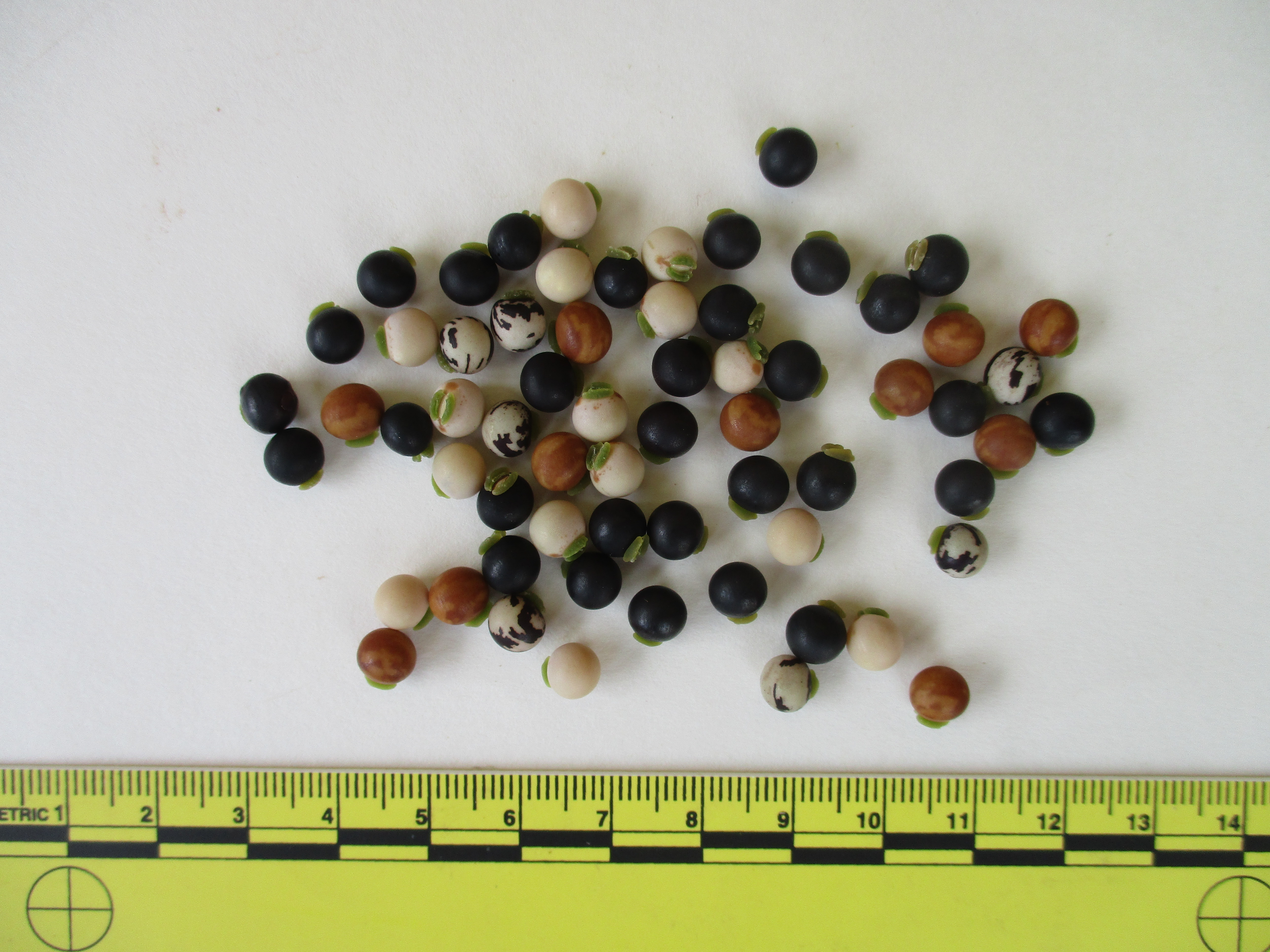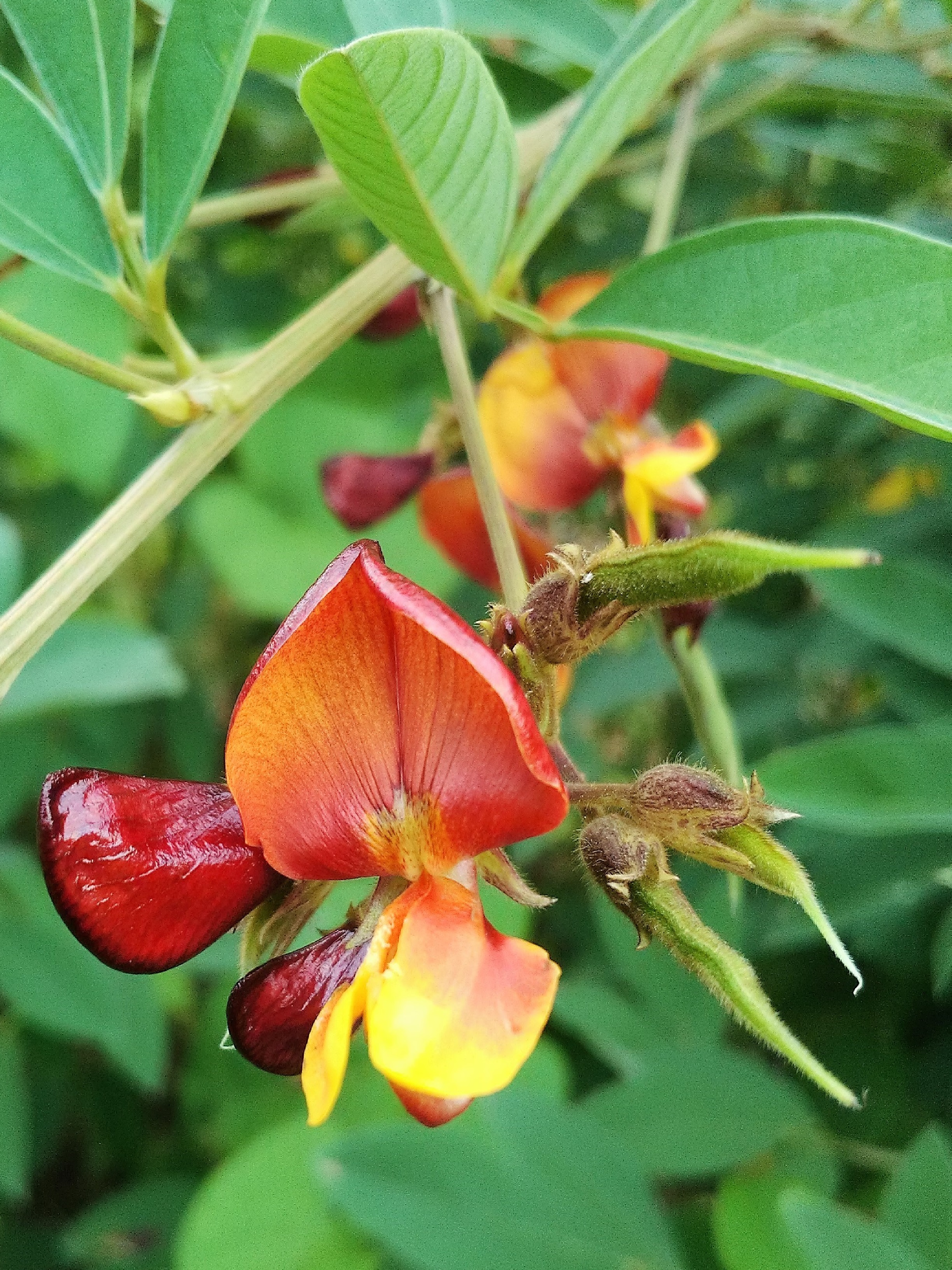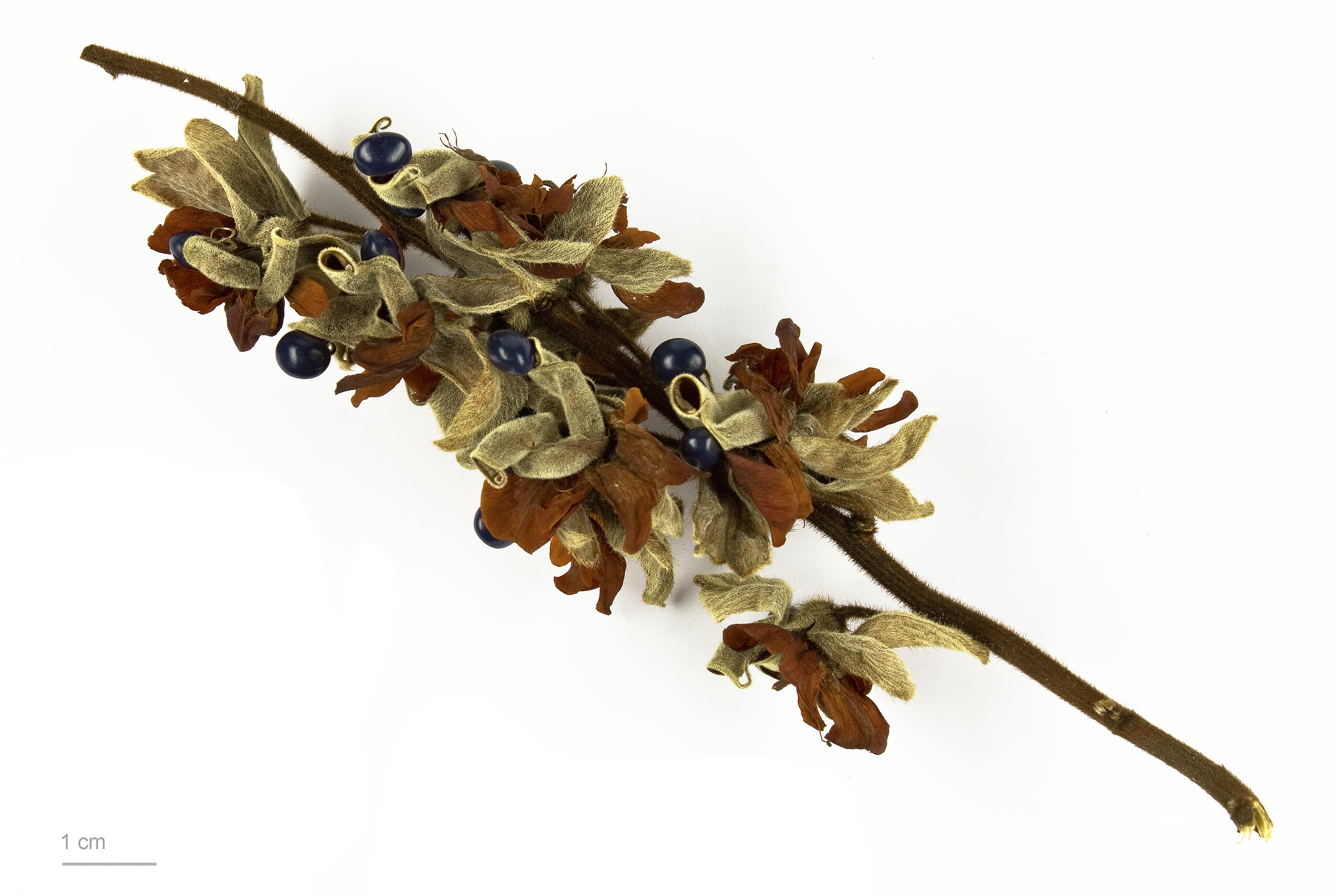|
Porphyrosela Neodoxa
''Porphyrosela neodoxa'' is a moth of the family Gracillariidae. It is known from Bihar, India. The larvae feed on ''Cajanus cajan'', ''Cajanus indicus'', ''Desmodium'', ''Rhynchosia'' species (including ''Rhynchosia minima''). They probably leaf miner, mine the leaves of their host plant. References Lithocolletinae Moths of Asia Moths described in 1916 {{Lithocolletinae-stub ... [...More Info...] [...Related Items...] OR: [Wikipedia] [Google] [Baidu] |
Edward Meyrick
Edward Meyrick (25 November 1854, in Ramsbury – 31 March 1938, at Thornhanger, Marlborough) was an English schoolmaster and amateur entomologist. He was an expert on microlepidoptera and some consider him one of the founders of modern microlepidoptera systematics. Life and work Edward Meyrick came from a Welsh clerical family and was born in Ramsbury on the Kennet to a namesake father. He was educated at Marlborough College and Trinity College, Cambridge. He actively pursued his hobby during his schooling, and one colleague stated in 1872 that Meyrick "has not left a lamp, a paling, or a tree unexamined in which a moth could possibly, at any stage of its existence, lie hid." Meyrick began publishing notes on microlepidopterans in 1875, but when in December, 1877 he gained a post at The King's School, Parramatta, New South Wales, there were greater opportunities for indulging his interest. He stayed in Australia for ten years (from 1877 until the end of 1886) working a ... [...More Info...] [...Related Items...] OR: [Wikipedia] [Google] [Baidu] |
Moth
Moths are a paraphyletic group of insects that includes all members of the order Lepidoptera that are not butterflies, with moths making up the vast majority of the order. There are thought to be approximately 160,000 species of moth, many of which have yet to be described. Most species of moth are nocturnal, but there are also crepuscular and diurnal species. Differences between butterflies and moths While the butterflies form a monophyletic group, the moths, comprising the rest of the Lepidoptera, do not. Many attempts have been made to group the superfamilies of the Lepidoptera into natural groups, most of which fail because one of the two groups is not monophyletic: Microlepidoptera and Macrolepidoptera, Heterocera and Rhopalocera, Jugatae and Frenatae, Monotrysia and Ditrysia.Scoble, MJ 1995. The Lepidoptera: Form, function and diversity. Oxford, UK: Oxford University Press; 404 p. Although the rules for distinguishing moths from butterflies are not well est ... [...More Info...] [...Related Items...] OR: [Wikipedia] [Google] [Baidu] |
Gracillariidae
Gracillariidae is an important family of insects in the order Lepidoptera and the principal family of leaf miners that includes several economic, horticultural or recently invasive pest species such as the horse-chestnut leaf miner, ''Cameraria ohridella''. Taxonomy and systematics There are 98 described genera of Gracillariidae (see below). A complete checklist is available of all currently recognised species. There are many undescribed species in the tropics but there is also an online catalogue of Afrotropical described speci the South African fauna is quite well known. Although Japanese and Russian authors have recognised additional subfamilies, there are three currently recognised subfamilies, Phyllocnistinae of which is likely to be basal. In this subfamily, the primitive genus ''Prophyllocnistis'' from Chile feeds on the plant genus ''Drimys'' (Winteraceae), and has leaf mines structurally similar in structure to fossils (see "Fossils"). While there have been some r ... [...More Info...] [...Related Items...] OR: [Wikipedia] [Google] [Baidu] |
Bihar
Bihar (; ) is a state in eastern India. It is the 2nd largest state by population in 2019, 12th largest by area of , and 14th largest by GDP in 2021. Bihar borders Uttar Pradesh to its west, Nepal to the north, the northern part of West Bengal to the east, and with Jharkhand to the south. The Bihar plain is split by the river Ganges, which flows from west to east. On 15 November 2000, southern Bihar was ceded to form the new state of Jharkhand. Only 20% of the population of Bihar lives in urban areas as of 2021. Additionally, almost 58% of Biharis are below the age of 25, giving Bihar the highest proportion of young people of any Indian state. The official languages are Hindi and Urdu, although other languages are common, including Maithili, Magahi, Bhojpuri and other Languages of Bihar. In Ancient and Classical India, the area that is now Bihar was considered the centre of political and cultural power and as a haven of learning. From Magadha arose India's ... [...More Info...] [...Related Items...] OR: [Wikipedia] [Google] [Baidu] |
India
India, officially the Republic of India ( Hindi: ), is a country in South Asia. It is the seventh-largest country by area, the second-most populous country, and the most populous democracy in the world. Bounded by the Indian Ocean on the south, the Arabian Sea on the southwest, and the Bay of Bengal on the southeast, it shares land borders with Pakistan to the west; China, Nepal, and Bhutan to the north; and Bangladesh and Myanmar to the east. In the Indian Ocean, India is in the vicinity of Sri Lanka and the Maldives; its Andaman and Nicobar Islands share a maritime border with Thailand, Myanmar, and Indonesia. Modern humans arrived on the Indian subcontinent from Africa no later than 55,000 years ago., "Y-Chromosome and Mt-DNA data support the colonization of South Asia by modern humans originating in Africa. ... Coalescence dates for most non-European populations average to between 73–55 ka.", "Modern human beings—''Homo sapiens''—originated in Africa. Th ... [...More Info...] [...Related Items...] OR: [Wikipedia] [Google] [Baidu] |
Larva
A larva (; plural larvae ) is a distinct juvenile form many animals undergo before metamorphosis into adults. Animals with indirect development such as insects, amphibians, or cnidarians typically have a larval phase of their life cycle. The larva's appearance is generally very different from the adult form (''e.g.'' caterpillars and butterflies) including different unique structures and organs that do not occur in the adult form. Their diet may also be considerably different. Larvae are frequently adapted to different environments than adults. For example, some larvae such as tadpoles live almost exclusively in aquatic environments, but can live outside water as adult frogs. By living in a distinct environment, larvae may be given shelter from predators and reduce competition for resources with the adult population. Animals in the larval stage will consume food to fuel their transition into the adult form. In some organisms like polychaetes and barnacles, adults are im ... [...More Info...] [...Related Items...] OR: [Wikipedia] [Google] [Baidu] |
Cajanus Cajan
The pigeon pea (''Cajanus cajan'') is a perennial legume from the family Fabaceae native to the Old World. The pigeon pea is widely cultivated in tropical and semitropical regions around the world, being commonly consumed in South Asia, Southeast Asia, Africa, Latin America and the Caribbean. Etymology and other names Scientific epithet The scientific name for the genus ''Cajanus'' and the species ''cajan'' derive from the Malay word ''katjang'' meaning legume in reference to the bean of the plant. Common English names In English they are commonly referred to as pigeon pea which originates from the historical utilization of the pulse as pigeon fodder in Barbados. The term Congo pea and Angola pea developed due to the presence of its cultivation in Africa and the association of its utilization with those of African descent. The names no-eye pea and red gram both refer to the characteristics of the seed, with no-eye pea in reference to the lack of a hilum on most varieties, ... [...More Info...] [...Related Items...] OR: [Wikipedia] [Google] [Baidu] |
Cajanus Indicus
The pigeon pea (''Cajanus cajan'') is a perennial legume from the family (biology), family Fabaceae native to the Old World. The pigeon pea is widely cultivated in tropical and semitropical regions around the world, being commonly consumed in South Asia, Southeast Asia, Africa, Latin America and the Caribbean. Etymology and other names Scientific epithet The scientific name for the genus ''Cajanus'' and the species ''cajan'' derive from the Malay language, Malay word ''katjang'' meaning legume in reference to the bean of the plant. Common English names In English language, English they are commonly referred to as pigeon pea which originates from the historical utilization of the pulse as Columbidae, pigeon fodder in Barbados. The term Congo pea and Angola pea developed due to the presence of its cultivation in Africa and the association of its utilization with those of African descent. The names no-eye pea and red gram both refer to the characteristics of the seed, with no-eye ... [...More Info...] [...Related Items...] OR: [Wikipedia] [Google] [Baidu] |
Desmodium
''Desmodium'' is a genus of plants in the legume family Fabaceae, sometimes called tick-trefoil, tick clover, hitch hikers or beggar lice. There are dozens of species and the delimitation of the genus has shifted much over time. These are mostly inconspicuous plants; few have bright or large flowers. Though some can become sizeable plants, most are herbs or small shrubs. Their fruit are loments, meaning each seed is dispersed individually enclosed in its segment. This makes them tenacious plants and some species are considered weeds in places. They have a variety of uses. Uses Several ''Desmodium'' species contain potent secondary metabolites that are released into the soil and aerially. Allelopathic compounds are used in agriculture in push-pull technology: ''Desmodium heterocarpon'', ''Desmodium intortum'', and ''Desmodium uncinatum'' are inter-cropped in maize and sorghum fields to repel ''Chilo partellus'', a stem-boring grass moth, and suppress witchweeds, including Asi ... [...More Info...] [...Related Items...] OR: [Wikipedia] [Google] [Baidu] |
Rhynchosia
''Rhynchosia'', also known as snoutbean, is a genus of plants in the family Fabaceae. There are several different complexes within the genus, including the ''Senna'' complex.Turner,B.L., http://www.biosci.utexas.edu/prc/pdfs/Turner-Lundellia14.pdf Species Species include: * ''Rhynchosia americana'' * '' Rhynchosia calosperma'' * ''Rhynchosia caribaea'' * ''Rhynchosia chapmanii''Verdcourt, B. (2000). New species of ''Rhynchosia'' Lour. (Leguminosae-Phaseoleae-Cajaninae) from the ''Flora Zambesiaca'' area. ''Kew Bulletin'' 55:1 137-46. * ''Rhynchosia chimanimaniensis'' * ''Rhynchosia cinerea'' * ''Rhynchosia cytisoides'' * ''Rhynchosia densiflora'' * ''Rhynchosia difformis'' * ''Rhynchosia edulis'' * ''Rhynchosia latifolia'' * ''Rhynchosia lewtonii'' * ''Rhynchosia malacophylla'' * ''Rhynchosia michauxii'' * '' Rhynchosia minima'' * ''Rhynchosia parvifolia'' * ''Rhynchosia phaseoloides'' * ''Rhynchosia precatoria'' * ''Rhynchosia reniformis'' * ''Rhynchosia ret ... [...More Info...] [...Related Items...] OR: [Wikipedia] [Google] [Baidu] |
Rhynchosia Minima
''Rhynchosia minima'' is a species of flowering plant in the legume family known by the common names least snout-bean, burn-mouth-vine, and jumby-bean. It can be found on every continent.Morris, J. B. (2008)''Rhynchosia minima'' (L.) DC. - regeneration, characterization and potential uses for natural products and flavonoids.''Plant Genetic Resources Newsletter'' 153 15-19. It is naturalized in Hawaii.''Rhynchosia minima''. Pacific Island Ecosystems at Risk. This perennial herb has twining or trailing stems which can reach 1.2 meters in length. The leaves are made up of three leaflets measuring up to 3 FAO. to 3.5 centimeters long.Woods, M. and J. Key. (2009) [...More Info...] [...Related Items...] OR: [Wikipedia] [Google] [Baidu] |
Leaf Miner
A leaf miner is any one of numerous species of insects in which the larval stage lives in, and eats, the leaf tissue of plants. The vast majority of leaf-mining insects are moths ( Lepidoptera), sawflies (Symphyta, the mother clade of wasps), and flies ( Diptera). Some beetles also exhibit this behavior. Like woodboring beetles, leaf miners are protected from many predators and plant defenses by feeding within the tissues of the leaves, selectively eating only the layers that have the least amount of cellulose. When attacking ''Quercus robur'' (English oak), they also selectively feed on tissues containing lower levels of tannin, a deterrent chemical produced in great abundance by the tree. The pattern of the feeding tunnel and the layer of the leaf being mined is often diagnostic of the insect responsible, sometimes even to species level. The mine often contains frass, or droppings, and the pattern of frass deposition, mine shape, and host plant identity are useful to de ... [...More Info...] [...Related Items...] OR: [Wikipedia] [Google] [Baidu] |


_1_by_N._A._Naseer.jpg)




